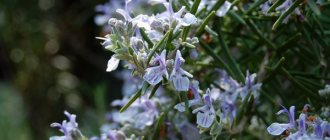Author: Elena N. https://floristics.info/ru/index.php?option=com_contact&view=contact&id=19 Category: Houseplants Published: October 24, 2017Last edits: January 11, 2021
Azalea (lat. Azalea) is the common name for some beautifully flowering species of the genus Rhododendron, which were previously classified as a separate genus of the Heather family. Actually, these are the same rhododendrons, only indoors. In nature, there are about 350 representatives of azaleas, but only two species are grown indoors. Azaleas are native to China and Japan, but today they can be found in Europe and North America. The generic name "rhododendron" consists of two Greek words that are translated as "rose" and "tree", that is, "rose tree". And “azalea” translated means “dried, waterless”: in nature, azalea is a small dry shrub. Azalea appeared in cultivation in the 17th century, and by 1820 the first varieties of the plant were bred, of which there were already more than a thousand by the beginning of the last century.
Planting and caring for azalea
- Flowering: from 2 to 6 months from December to March, sometimes even until April.
- Lighting: diffused light or light partial shade from western or northern window sills.
- Temperature: for normal growth and development, it is desirable to maintain a room temperature of 15-18 ˚C, for successful formation of buds - 10-12 ˚C, and for long and abundant flowering - 20 ˚C.
- Watering: often (daily or every other day, sometimes twice a day) and abundantly. Exactly how much depends on the level of air humidity in the room. It is best to simply place snow or pieces of ice on the surface of the substrate, which, when melted, will saturate the substrate with moisture and refresh the plant on a hot summer day. From time to time, dissolve a teaspoon of lemon juice in 2 liters of water for irrigation. In the fall, watering is reduced, but by the time of flowering, watering should again become frequent and abundant.
- Humidity: high. It is recommended to spray the leaves with a fine spray or keep the flower on a tray with wet pebbles.
- Feeding: in spring and summer - once a week, in winter - once a month. For fertilizing, use the Azalea mineral complex or another composition for flowering plants that does not contain chlorine. During budding and flowering, the plant will need more potassium.
- Pruning: at the beginning of active growth, shorten strongly grown shoots, and during the growing season, pinch the tops so that the plant bushes more strongly and subsequently blooms profusely.
- Dormant period: within two months after flowering.
- Replant: if necessary, when the pot becomes too small for the plant.
- Reproduction: by cuttings.
- Pests: spider mites, rhododendron bugs, azalea moths, greenhouse thrips.
- Diseases: fusarium, verticillium, alternaria, septoria, late blight, cercospora, phyllostictosis, necrosis and mixed chlorosis.
Read more about growing azaleas below.
Features of care
Caring for azaleas is aimed at creating conditions as close as possible to the natural microclimate of the plant growing in the wild.
- Lighting. It withers under direct exposure to the sun. Prefers to hide in partial shade, grows well in diffused bright light. In summer they are taken outside, providing shade from the sun. If possible, dig in directly in the pot in the shade of trees and shrubs.
- Temperature. In summer it is content with room temperature. In winter it requires lowering it to 12-14°C. Under proper conditions, it overwinters safely at 20-22°C.
- Watering. The substrate is not allowed to dry completely. Stagnation of moisture is also not allowed. Water with spring, river, melt and rain water. When using tap water, let it sit for two days. The best option is to freeze water in the freezer and then thaw it. After watering, do not loosen the soil - the roots of the azalea are very delicate!
- Humidity. Looks better in high humidity conditions. In summer it can do without artificially increasing humidity. In winter, it is recommended to spray the air around the flower, hang wet towels on the radiators, and place bowls of water nearby.
- The soil. The soil for azaleas is acidic. Optimal acidity is 4-4.5 pH. You can look for soil for azaleas and rhododendrons. The soil is prepared independently from a mixture of peat and coniferous soil. Sand is added to loosen it.
- Transfer. Young bushes require annual transshipment, adults “live” in one pot for 2-3 years. During transshipment, they try not to disturb the earthen lump. It is carefully moved into a larger pot and fresh soil is added. Due to the shallow root system, the pot for azaleas is chosen to be wide and low.
- Feeding. Fertilizers are applied frequently - at intervals of 1 week. Recommended products are superphosphate, potassium sulfite, ammonium sulfate. The bulk of fertilizing occurs in the spring-summer season. In the autumn-winter season, during the period of bud formation, it is recommended to add superphosphate at the rate of 15 grams. the drug in a bucket of water.
Useful tips! To maintain the acidity of the substrate, it is recommended to add a little citric acid (a few crystals) per liter of water for irrigation. It is useful to periodically water the azalea by completely immersing the pot in a bowl of water for a couple of hours. The water should reach the top edge of the pot, but not fall into it. Excess water is allowed to drain and the flower is returned to its original place.
Botanical description
Azaleas are divided into two groups:
- deciduous plants, including small trees;
- evergreens.
Azalea flowers have five stamens, while rhododendron flowers have 7 or more - this is the main difference between azaleas and rhododendrons. The indoor azalea is one of the most beautiful plants, but it is quite capricious. The azalea plant can bloom for up to six months with simple, double or densely double white, red, pink, dark purple and variegated flowers, but on average the flowering period lasts just over two months. Azalea leaves are small and dark green.
Interesting brief information about azalea
Azalea (Azalea) or rhododendron are profusely branching evergreen, unusual luxuriously blooming exotic bushes. They are distinguished by a huge variety of shapes and shades of flowers, as well as the duration of their flowering in cool times. These plant species now belong to the genus Rhododendron, which numbers approximately 1000 species. They belong to the huge heather family (Ericaceae). If we translate from the Greek term Rhododendron we get “Rose tree”. Azaleas are called English roses in Asian countries, but in Germany they are better known as alpine roses.
Planting and caring for azaleas at home
Azalea after purchase
The azalea flower appears in stores, as a rule, from December to March, and if you bought a plant or received it as a gift, you need to know how to properly care for it, because a home azalea, if poorly cared for and in inappropriate conditions, sheds its buds and loses leaves and eventually dies.
How to care for an azalea? What conditions does this plant require? Domestic azaleas suffer from high temperatures and dry air: for normal development, 15-18 ºC is enough for them; during budding, the temperature should be even lower - from 10 to 12 ºC, and azaleas bloom at temperatures no higher than 20 ºC. Therefore, the purchased flower should be placed in the coolest place, away from operating heating devices.
- Hypoestesis at home: care and types
Bright sunlight is also harmful to azaleas, so place the pot with the plant on a western or northern windowsill. In the warm season (from May to October), it is advisable to keep azaleas in the fresh air - on a balcony, loggia, terrace or in the garden.
Soil for azaleas
Azalea develops well only in acidic soil: the pH value should be in the range of 4.0-4.5 pH. Buying a substrate for azaleas is not a problem; it is sold in every flower shop. But you can make the soil yourself: mix sand, moss and rotted pine needles in a ratio of 1:1:2. To disinfect, spill the substrate with a strong solution of potassium permanganate.
Watering
Water the azalea generously, every day or every other day, depending on the air humidity in the room. In extreme heat, you may need to water the plant twice a day, as the soil in the pot should be slightly moist at all times. You need to pour cold, settled water onto the surface of the soil. It is even better to use rain or melt water for moisturizing. Inventive azalea lovers came up with the idea of placing a layer of snow or pieces of ice on the ground: at above-zero temperatures they melt, and cold melt water penetrates into the soil. From time to time, add lemon juice to the water for irrigation (a teaspoon per 2 liters of water) to make the azalea bloom even more abundantly and brightly. Do not forget to drain excess water from the pan, otherwise the azalea roots will begin to rot.
If for some reason you have severely dried out the soil in which the azalea grows, you need to place the pot with the plant in a container of water for 3-4 hours, but so that the water does not overflow into the pot. When the earthen azalea ball is saturated with moisture, remove the pot from the water, allow excess moisture to drain from the drainage holes and place the plant in its usual place. Regular watering is resumed after 3-4 days.
In October, watering is gradually reduced, but in December, when the azalea begins to bloom, it will again need abundant moisture. By the way, azalea blooms for the first time at the age of three or four.
If the air in the apartment is dry, the exotic plant is unlikely to like it: the air in the room needs to be humidified using a fine spray, trying to prevent water from getting on the azalea leaves. You can place the pot with the plant on a tray with wet pebbles, but only so that the roots and pebbles do not come into contact. Or place jars of water around the plant.
- Photo of Radermachera chinensis
Top dressing
Feed azaleas with mineral fertilizers for flowering plants, making sure that they do not contain chlorine. It is best to use Azalea fertilizer for fertilizing: in spring and summer, fertilizing is applied once a week, and in winter - only once a month. During the formation of buds and during flowering, azaleas will need fertilizer with a high potassium content, for example, Kemira-lux or Uniflor-bud.
Trimming
In order for azaleas to bush better and bloom more luxuriantly at home, you need to pinch and trim the overgrown stems in a timely manner. After the blooming azalea has stopped forming new buds and the flowers have begun to fade, you need to remove the browned leaves from the bush, trim off weak and elongated shoots, and then remove all the flowers along with the pedicels. If there is a need to replant an azalea, the best time for this is immediately after flowering has ended.
A month later, at the stage of development of 3-4 pairs of leaves on young shoots, their tops are pinched. You will need to pinch the ends of the shoots a couple more times, and then buds will appear at their ends again. The last pinching is carried out at the end of July or beginning of August, but this time it is not necessary to pinch all the shoots: only those that have become very elongated are shortened. Pruning (pinching) azaleas is a technique that increases the intensity of flowering. By the way, if, simultaneously with the formation of buds, new shoots begin to grow near them, they should be removed.
What conditions are required?
When planning to propagate this beautiful ornamental plant, it is important to pay attention to the quality of planting material. It must be obtained from a healthy, mature and well-developed plant, adapted to keeping at home. Plants that are too young and weak are not suitable for obtaining planting material, as they have low donor potential
Very mature and old azaleas are also almost never used for the procedure, since at this age stage their metabolic processes slow down and nutrients, micro- and macroelements are less absorbed. Taken together, these factors make older plants unsuitable for propagation.
Plants that are too young and weak are not suitable for obtaining planting material, as they have low donor potential. Very mature and old azaleas are also almost never used for the procedure, since at this age stage their metabolic processes slow down and nutrients, micro- and macroelements are less absorbed. Together, these factors make older plants unsuitable for propagation.
Another equally important condition on which the results of the upcoming event depend is the quality of the soil mixture. Its composition and properties are of equal importance both when breeding azaleas by seeds and when propagating them by cuttings or dividing the bush.
If sand is used in the soil mixture, it must first be sifted, washed and calcined.
Other conditions that ensure effective breeding of indoor azaleas are:
- creating a greenhouse effect;
- maintaining sufficient air humidity;
- ensuring stable temperature conditions.
The greenhouse effect is necessary for seed germination and rooting of cuttings. This can be achieved using an improvised greenhouse made from a plastic bottle cut in half, a container with a lid, or plastic film used to cover a container with planting material.
Considering that this ornamental crop is moisture-loving, when growing it it is important to ensure sufficient air humidity. This can be done through periodic spraying and irrigation.
You can also maintain the required level of moisture in the air using a special room humidifier or a wide container filled with water and placed next to the plants.
Despite the fact that to date, breeders have managed to obtain cold-resistant hybrids, when breeding azaleas it is still advisable to maintain the temperature at 22–25°.
Transplantation and propagation of azaleas
When replanting an azalea after flowering, do not immerse the root collar in the soil, otherwise the plant will die. Also try not to damage the roots of the azalea: do not touch its earthen lump unless absolutely necessary. How to replant an azalea without harming it? If the pot becomes too small for the plant, simply transfer it along with the lump into a new container, the diameter of which should be 2 cm larger than the previous container. You already know what kind of soil azaleas need.
At home, azalea propagates mainly by cuttings. However, this is a long and troublesome task, so it is much easier to buy a plant in a store. But if you still want to start propagation, use a sharp blade or knife to cut 10-15 cm long pieces from young, not yet lignified shoots of the plant. The lower cut should pass under the bud. Leaves from the bottom of the cuttings must be removed. The cuttings are planted in moist peat to a depth of 5 cm, the substrate around them is squeezed well and each cutting is covered with a glass jar. You can plant the cuttings in a mini-greenhouse and cover them with a transparent lid. The rooting procedure should take place at a temperature of 25 ºC. The covering is removed two to three times a day to ventilate and, if necessary, moisten the substrate. Rooting lasts about six months, after which the seedlings with developed roots are planted in a permanent container and conditions are created for them as for adult plants.
You can try to root azalea cuttings. Make a small cut on the side shoot under the bud (there must be one pair of leaves above the bud), place the layer on the soil in the pot, fix it in this position and sprinkle it with soil. When the cuttings take root, they are separated very carefully so as not to damage the mother plant and transplanted into a pot.
Reproduction methods
Azaleas are propagated either through seeds or vegetatively. The first option is more acceptable for breeders involved in developing new varieties.
Propagation by cuttings
The material is harvested in March-June; the cuttings should be 5-8 cm in length and semi-lignified. After treatment with a growth stimulator, it is buried 2 cm into the soil, consisting of garden soil and rotted pine needles. After which the container is covered with polyethylene to create greenhouse conditions. Ventilation, irrigation and spraying of cuttings are carried out periodically. The rooting process takes 1-1.5 months, and new shoots form only after six months.
Dividing the bush
An azalea bush 3-4 years old is suitable for this method of propagation. It is divided into several parts and determined according to personal containers.
Caring for azaleas involves creating favorable conditions: timely watering, maintaining optimal air temperature and humidity in the room.
Diseases and pests
Diseases of azaleas are most often associated with violation of the rules of care and maintenance: too high a temperature in the room, poor lighting, insufficient or excessive watering, planting in soil of inappropriate composition. There may, of course, be other reasons.
- Croton (Codiaeum) – care, photos, types
A lack of moisture in the soil and air can be indicated by limp, wrinkled or falling leaves and buds of the azalea. Correct your mistakes and keep in mind for the future that when the air temperature rises, watering should be more abundant and more frequent, and when the temperature drops, the amount of moisture should be reduced. Watering with hard water also harms the plant: tap water needs to sit for at least two days, otherwise the leaves begin to turn yellow and fall off, and the flowering of the azalea becomes sparse.
Poor light and direct sunlight also harm the plant, so try to find a suitable place for your azalea. The health of the flower is affected by the composition of the soil that does not meet its needs: the substrate for azaleas should be acidic, not neutral, and certainly not alkaline.
Azalea is very resistant to pests, but in conditions of insufficient watering and dry air it can be occupied by spider mites, which make small punctures on the leaves of the plant and suck out cell sap. If you find discolored spots and fine cobwebs on the foliage, immediately wash the azalea leaves on all sides with a weak tobacco solution with the addition of liquid detergent. Remember to protect the soil in the pot from alkali. 2-3 hours after treatment, azalea leaves should be washed well with clean cold water.
Effective against mites pollinating azaleas with sulfur powder or treatment with acaricidal preparations - Actellik, Aktara, Karbofos. Both pollination and spraying should be carried out outside the apartment, preferably in the open air, and as many times as needed to destroy pests. The interval between treatments is from 7 to 10 days.
Description and photos of insects, measures to combat them
If insects are found on azaleas in the soil, it is necessary to clarify the type of pest in order to select the most effective means for its destruction.
Rhododendron bug
An adult specimen measures about 3.5 mm. She lays eggs, covering them with a dark brown resinous mass. The larvae feed on plant sap, which causes yellowing and gradual deformation of the leaf. Treating the affected areas with Malathion and Decis helps get rid of the pest.
Mealybug
A white waxy coating on any part of the plant indicates the presence of a pest. If the affected area is small, it can be treated with a sponge soaked in onion juice. In severe cases of the disease, it is recommended to use Actellik or Malathion in accordance with the instructions.
Weevil
The wilting of azaleas may be due to the appearance of larvae in the soil that damage the roots. Watering with Bazurdin solution helps to get rid of them. Spraying the green part of the bush helps combat adult individuals, whose food is leaves and buds.
Khrushchik
The parasite feeds on young leaves, in which it makes holes. In severe cases, only a network of veins remains from the leaf blade. Treatment should begin when the first signs appear, applying Diazinon to the affected bush.
Slug
The parasite prefers to destroy the tender young leaves of the plant. To combat the pest, Mesurol is used in accordance with the instructions.
Thrips
The leaves that the pest has chosen as food begin to turn yellow and characteristic holes form on them. A weakened azalea reduces its growth rate and stops blooming. To get rid of insects, the plant is treated with Carbofox solution or Malathion emulsion 0.2%.
Mole
Caterpillars damage leaves by eating them and using the back side to form a cocoon. Fumigation with sulfur or spraying with Rogor solution helps to cope with the pest.
Fly
The appearance of light spots on the leaves requires checking the back side for the presence of rhododendron fly larvae feeding on the plant sap. The pest is sensitive only to nicotine sulfate.
Aphid
Slowing growth, stopping flowering and curling leaves may be a result of aphids eating azalea juice. In the absence of the necessary help in the form of spraying with Actellik, Ambush or Fitoverm, the plant dies.
Mite
In rooms with dry air, spider mites can settle at the base of leaves, feeding on flowers and young shoots. The presence of cobwebs helps to detect it.
For small lesions, the plant is treated with a soap solution, followed by applying a garlic solution to the leaves. In case of widespread damage, the use of Actellik acaricide is required.
Types and varieties
Numerous varieties and varieties of the following types of azaleas are grown indoors:
- Simps's rhododendron, or Simps's azalea, or Indian azalea, is a hybrid plant with a rich history;
- rhododendron obtuse, or Japanese azalea.
Both of these species are dwarf shrubs with a height of 30 to 50 cm. Varieties and hybrids of azaleas according to flowering periods are divided into early flowering, the flowering of which continues from late October to early January, mid-flowering (from January to March) and late flowering (from January to early May ).
The most popular early flowering azaleas are:
- Adventglockchen - a variety with bell-shaped simple or slightly double crimson-red flowers up to 6 cm in diameter;
- Dresden 1936 - shiny medium-double flowers of a salmon-pink hue;
- Doberlug - double dark pink flowers up to 7 cm in diameter with a white border of irregular outline;
- Weiss Shame - wide funnel-shaped double flowers with a diameter of 6.5 cm, white with a cream or soft pink tint;
- Eri - semi-double carmine-pink flowers with a diameter of about 7 cm with a white border of irregular shape;
- Orange Bowen - semi-double raspberry-red flowers with a diameter of 5 to 6.5 cm;
- Enzette Dagmar - shiny double flowers up to 7 cm in diameter, intense pink;
- Helmut Vogel is a very early variety of azalea with double purple-red flowers with a diameter of 7 cm.
Medium-flowering azaleas are represented by the following popular varieties:
- Albert-Elizabeth - white or soft pink double flowers up to 8.5 cm in diameter with a red border along the edges of the petals;
- Apollo - simple and slightly double flowers, slightly wavy along the edges of the petals, brick-red flowers with a diameter of 7 cm;
- Avenir - semi-double, bright salmon-carmine flowers up to 8 cm in diameter with an intense carmine tint in the folds of the petals;
- Florida - simple dark red flowers up to 6 cm in diameter;
- Leopold Astrid - double flowers of soft pink color with a diameter of 7 cm with a red border and petals corrugated at the edges;
- Max Shame - double, salmon-colored flowers with heavily corrugated petals, up to 6.5 cm in diameter, with a white border along the edge.
Of the azaleas that bloom later than other varieties, the following are popular:
- Niobe - double white flowers up to 7.5 cm in diameter with a greenish throat and red specks on the petals;
- Concinna is a vigorous variety with simple funnel-shaped light lilac flowers up to 7 cm in diameter with bright crimson specks;
- Ernest Tirs - semi-double raspberry-pink flowers with a diameter of about 8 cm;
- Coelestinum - simple intense carmine flowers with a diameter of 6 cm;
- Hexe is a vigorous variety with double flowers of a bright wine color;
- Professor Walters - simple funnel-shaped flowers of a bright light salmon hue, up to 7.5 cm in diameter with almost white edges, the three upper petals are decorated in the throat with crimson-red specks;
- Sakuntala - white double flowers up to 7.5 cm in diameter with green specks in the throat.
You can divide azalea varieties by color. For example, varieties with white flowers, in addition to those that we have already described, include Mary, Heidi, Watercolor, Snezhinka, Shneg, Rose Belton. Azaleas with red flowers: Simon, Holland, Knut Even, Eclair, Ilona, Frau Elsa Kärgeri. Raspberry flowers are found in the Cosmos variety, lilac flowers in the Flamenco, Violyacea multiflora, Ostalette and Temperance varieties, and pink flowers in the Terra Nova, Pink Pearl, Oslo, Scarlet Flower, Rays, St. Valentine and Rosalie azaleas.
indoor azalea
Author: Veronika Viktorova Category: Houseplants Published: May 17, 2013 Republished: February 18, 2022 Last edits: November 16, 2020
- Listen to the article
- Azalea is a whimsical flower
- Azalea for Valentine's Day
- How to care for an azalea Lighting
- Temperature
- Humidity
- Watering
- Soil for azaleas
- Transfer
I decided to buy an indoor azalea after I visited the greenhouse of the Kyiv Botanical Garden.
February-March is the peak of flowering of these amazing plants. Of course, in the greenhouse they look like large bushes, almost trees. Remember Vysotsky: “And sitting in a circle under the Azaleas...” Indoor azaleas, although not so majestic, are no less beautiful. The indoor azalea is a small plant with a woody trunk and very beautiful flowers, which I was tempted by. As a result, instead of home azaleas, I got office azaleas: they were more suited to the conditions of my office, but they didn’t like it in the apartment, and here’s why... Azalea blooms in different colors, but the white plant has gained particular popularity. Its leaves are dark green, they grow in height from 2 to 3.5 cm. They are matte below and shiny at the top.
Here you will see photos with the names of white varieties and their descriptions.
The most beautiful varieties of white azalea include:
Japanese Melina
A very attractive plant with small flowers. Its branches are literally strewn with them, which creates the feeling that there is snow on them. The originality of this variety is amazing.
Indian Stella Maris
The white flowers of this species have an original colored border around the edges. Raspberry splashes on the petals look very beautiful. Flowers can be corrugated, double or simple.
Knap Hill Sylphides
This variety is considered frost-resistant. Plants resist frost well. The background color is white, and in the middle of each flower there is a yellow center. This variety does not have a pronounced aroma, and mass flowering occurs in May and June. An adult bush has a large crown in the form of a ball, the height of which can reach 120 cm.
Hybrid warbler
A bush consisting of two parts. It will be a good decoration for any garden and can be used as a single or group planting. The height of the bush is about one meter.
Deciduous Koichiro Wada
An Asian variety that features beautiful bright pink buds (read about pink azalea here). Cupped flowers may turn completely white. The leaves are dark green, leathery and dense. The ornamental shrub is 140 cm high and 220 cm wide.
How to choose the right plant
In order for the plant to grow, bloom and please the owner, you need to choose the right azalea. Some tips on this matter.
- You should not purchase too large copies. They are difficult to adapt to when transplanted.
- Also, you should not take very young seedlings. They have a hard time withstanding changes in growing conditions.
- A very important factor in growing azaleas is watering. You need to make sure that the soil in the pot is slightly moist, but the flower is not flooded. Dry soil is also not a good sign of plant maintenance.
- The leaves and stems should be free of signs of diseases and parasites. For example, stains, cobwebs, sticky discharge. You need to shake the pot slightly. If leaves fall from the plant, then most likely it will die soon. If there is no experience in resuscitating azaleas with a successful outcome, then it is better to purchase another specimen.
- A plant that blooms profusely is not an indicator that the flower is healthy and will continue to delight with its appearance after the flowers fall. Very often, prohibited techniques (various types of stimulation) are used to stimulate flowering in stores and greenhouses. Therefore, it is preferable to purchase green plants without flowers or with buds.
Popular varieties of azaleas with red flowers
Hybrid azalea "Nabucco" reaches 180cm in height. Dark red elongated buds open into large (up to 8 cm) bright flowers with red petals. Flowering begins with the appearance of leaves, so the inflorescences stand out effectively against the background of bright light green foliage.
Hybrid azalea "Parkfeuer" can grow up to 2 m in height and one and a half meters in diameter. It bushes strongly, so that during flowering the crown is literally strewn with inflorescences. The dark burgundy buds open into matte red flowers. The veins are clearly visible on each of the petals. Along with the inflorescences, the shoots are also decorated with young, lush green foliage, which is why the shrub looks bright and festive.
Every spring, more than 30 varieties of azaleas appear on sale in the garden, so you can purchase a shrub before or during flowering and admire it on your own site. As a rule, many varieties remain on the trading floor for the entire season. You can see the current assortment in the azalea catalogue.
The flowering of azaleas cannot be called long-lasting: a maximum of 3-4 weeks, but you will be surprised how much any composition can transform when it is decorated with this stunning flowering shrub.











